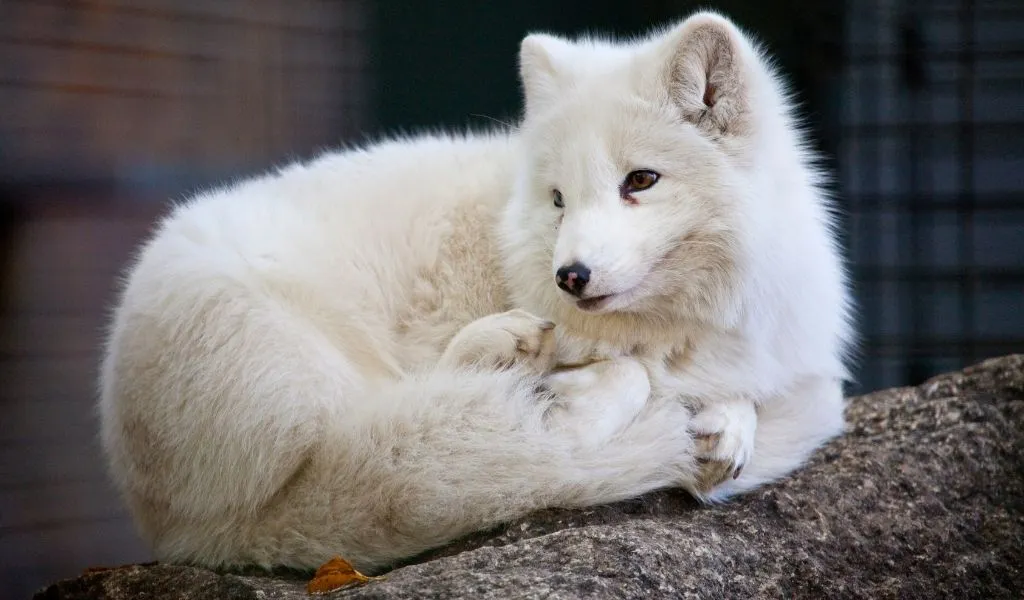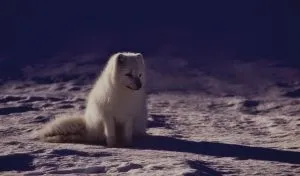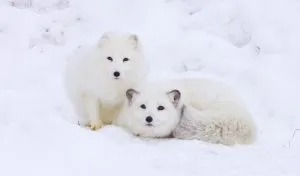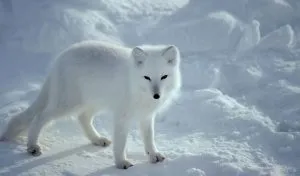Most people are familiar with the incredible arctic fox and its thick white fur coat, but as they live in the tundra, the majority of people have never got the chance to see them in real life. So, just how big are they and how much do they weigh?
At birth, arctic fox pups will weigh 80-85g. Once fully grown, an average male arctic fox weighs 3.6kg in summer and 4.2kg in winter. Their weight changes because they store food as energy and put on extra weight to keep warm in the tundra climate.
Arctic foxes are one of the smaller canines in the northern parts of the world with an average length of 849mm from head to the tip of their tail (based on a male). They are light but have large paws which help spread their weight as they move across the snow.
Keep reading for more information about the size and weight of the arctic fox compared to other canines.
How Big is an Arctic Fox?
An arctic fox is one of the smaller members of the canine family. A male adult arctic fox measures 849mm from its head to the tip of its tail whilst a female measures 810mm.
The arctic fox has a short, but very bushy tail that measures 271mm for males and 262mm for females.
Arctic foxes are similar in size to the kit fox which is found in southern areas of the United States.
However, they are much smaller than other foxes found in northerly areas. Arctic foxes are about 25% smaller than the common red fox which has started encroaching on their territory.
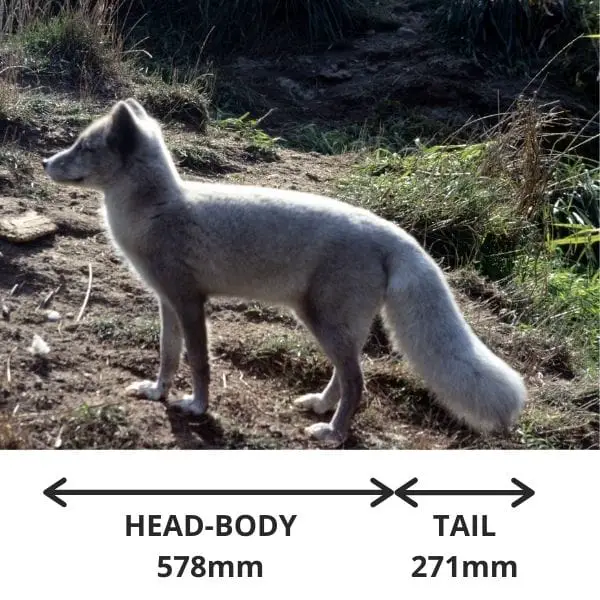
This table shows the length of an arctic fox compared to other canines:
| Animal | Total Length – Male (mm) | Total Length – Female (mm) |
|---|---|---|
| Arctic Fox | 849 | 810 |
| Gray Fox | 981 | 924 |
| Red Fox | 1060 | 1000 |
| Kit Fox | 845 | 790 |
| Swift Fox | 809 | 781 |
| Grey Wolf | 1650 | 1585 |
As for their height, a typical male arctic fox is around 25-30cm tall. Again, this is much shorter than red foxes which will typically grow up to 35-50cm tall1 (source: Simon & Schuster’s Guide to Mammals, L. Boitani, 1984).
How Heavy is an Arctic Fox?
Arctic foxes vary in weight between the summer and winter, this is because their bodies are well adapted to the extreme arctic environment. The food is stored for reserve energy and to provide excess fat to help deal with the cold.
- In the summer (June – July), a male arctic fox will weigh about 3.6kg and a female will weigh 3.1kg.
- In the winter (November – February), a male arctic fox will weigh 4.2kg and a female will weigh 3.7kg2 (source: Canids: Foxes, Wolves, Jackals and Dogs, IUCN Canid Specialist Group, C. Sillero-Zubiri, M. Hoffmann, and D. W. Macdonald, 2004).
It is not uncommon for arctic foxes to increase their weight by more than 50% in fall3 (source: Adaptations by the Arctic fox to the polar winter, P. Prestrud, Arctic, Vol 44, 1991).
This table shows the weight of the arctic fox compared to other canines.
| Animal | Weight – Male (kg) | Weight – Female (kg) |
|---|---|---|
| Arctic Fox | 3.6 – 4.2 | 3.1 – 3.7 |
| Gray Fox | 4.0 | 3.3 |
| Red Fox | 6.3 | 5.3 |
| Kit Fox | 2.3 | 1.9 |
| Swift Fox | 2.2 | 2.0 |
Arctic foxes are known for having disproportionately large paws for their weight compared to other similar species such as gray foxes, red foxes, and wolves. It is expected that this is to help them move across the snowy tundra with ease4 (source: The relationship between foot size of wild canids and regional snow conditions, D. L. Murray and S. Lariviere, Journal of Zoology, Vol 256, 2002).
This is one of many adaptions that helps them thrive in extreme arctic conditions. Other adaptions include fur that changes color in winter to blend in with the snow and smaller
How Big is a Baby Arctic Fox?
The size of arctic foxes when they are born will often depend on the size of their litter. In Iceland where there are relatively small litter sizes, they weigh 80-85g at birth. They grow rapidly, gaining around 30-34g per day from weaning5 (source: Canids: Foxes, Wolves, Jackals and Dogs, IUCN Canid Specialist Group, C. Sillero-Zubiri, M. Hoffmann, and D. W. Macdonald, 2004).
Arctic foxes reach sexual maturity at the age of 10 months, this means that they can breed the following breeding season after being born.
However, pup mortality can be high, especially in regions with scarce food resources and/or a large number of predators.
Researchers have observed entire litters being killed by predators within a day of leaving their den for the first time6 (source: Predation of arctic fox pups by common ravens, C. Chevallier. et al, Polar Biology, Vol 39, Issue 7, 2015).
Find out more about this in our guide to how long arctic foxes live.
Related Questions
How Old Are Arctic Foxes?
Arctic foxes in the wild usually live to the age of 3 years old although, in some regions where there is abundant food and fewer predators, they have been known to live as old as 11 years old7 (source: Canids: Foxes, Wolves, Jackals and Dogs, IUCN Canid Specialist Group, C. Sillero-Zubiri, M. Hoffmann, and D. W. Macdonald, 2004).
Are Arctic Foxes Mammals?
Yes, arctic foxes are mammals. They are members of the canine family similar to other foxes, wolves, and domesticated dogs that are in our homes.
What Do Arctic Foxes Look Like?
Arctic foxes are one of the most distinguishable canines. They have short muzzles, small ears, and a big bushy tail. But, they are best known for having a coat that changes color with the seasons.
In winter, they have a thick white coat that provides extra insulation and helps them blend in with the snow. In summer, they shed this for a lighter brown or grey coat that provides more effective camouflage against the rocky terrain of the tundra when the snow melts.
How Fast Can An Arctic Fox Run?
Arctic foxes can reach top speeds of 50km/h (31mph). This is fast enough to easily outrun a polar bear, although they have the same top speed as a red fox which is their biggest predator.
Arctic foxes tend to rely on stealth to evade predators rather than speed, using camouflage to blend in and having large dens with many exits to quickly escape.


